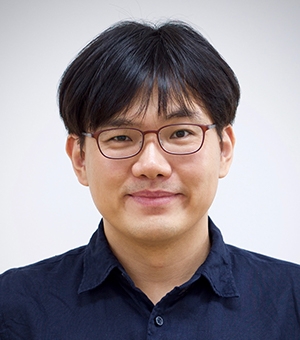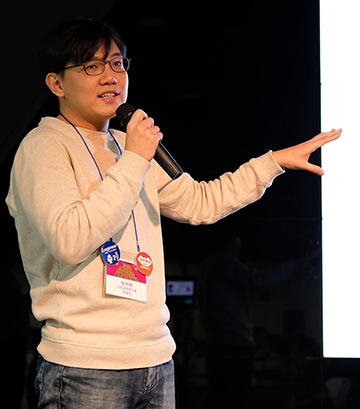Chang, Hyeshik
A newly developed measurement technology delivers a broader and deeper view to scientists for understanding nature better. Our group is curious about the fundamental machinery and circuitry for the gene regulatory mechanisms. To that end, we focus on developing new experimental methods and data analysis techniques that enhance our understandings about the molecular phenomena in genomic, transcriptomic, and proteomic levels.
Current Research Topics
1. Tracking the RNA life cycle with nanopore direct RNA sequencing
The second-generation DNA sequencers can only read the standard four nucleotides since their chemistries rely on the Watson-Crick complementarity. A new technology called nanopore sequencing analyzes the nucleic acids by monitoring the ionic current changes during their migrations through a 1 nm hole in the middle of a thin membrane. Thanks to the unique strategy for the detection, it can report a diverse array of chemical modifications to DNA or RNA and reads fairly long sequence as a whole. We develop new experimental methods and analytic algorithms to utilize nanopore direct RNA sequencing in our studies of post-transcriptional gene regulation. We, then, track the changes of elements of RNA and RNA-protein interactions to map a comprehensive history through the life cycle of RNA.
2. High-throughput profiling of poly(A) tails
Near the 3′ end of mRNA, poly(A) tails are elongated, shortened, and modified with additional nucleotides like uridine or guanosine. Messenger RNAs are regulated through this part for the controls in their stability and protein production. As long homopolymeric sequences, poly(A) tails are challenging to analyze using a sequencer and the adjacent sequences are also hard to tackle the diffused noises. Our lab has been developing a method and reference software for profiling poly(A) tails transcriptome-wide using the second-generation sequencers. We are continuing to put effort into enhancing the method and software further to make them useful and efficient in more diverse biological contexts.
Education
- - 2009–2014 Ph.D. in Biological Sciences, Seoul National University
- - 2007–2009 M.S.E. in Bio and Brain Engineering, Korea Advanced Institute of Science and Technology (KAIST)
- - 1998–2007 B.S.E. in Information and Industrial Engineering, Yonsei University
Career
- - 2019–present Assistant Professor, School of Biological Sciences, Seoul National University
- - 2018–present Research Fellow, Center for RNA Research, Institute for Basic Science (IBS)
- - 2014–2019 Research Assistant Professor, Center for RNA Research, Institute for Basic Science (IBS)
- - 2004–present Fellow/committer, Python Software Foundation
- - 2001–2005 Software Developer, Network Solution Development Team, LinuxKorea, Inc.
- H. Chang*, J. Yeo*, (co-first authors) J.-G. Kim, H. Kim, M. Lee, J. Lim, H. H. Kim, J. Ohk, H.-Y. Jeon, H. Lee, H. Jung, K.-W. Kim, and V. N. Kim. (2018) “Terminal uridylyltransferases execute programmed clearance of maternal transcriptome in vertebrate embryos.” Molecular Cell, 70:72–82.e7.
- J. Lim*, M. Ha*, H. Chang*, (co-first authors) S. C. Kwon, D. K. Simanshu, D. J. Patel, and V. N. Kim. (2014) “Uridylation by TUT4 and TUT7 marks mRNA for degradation.” Cell, 159(6):1365–1376.
- H. Chang*, J. Lim*, (co-first authors) M. Ha, and V. N. Kim. (2014) “TAIL-seq: genome-wide determination of poly(A) tail length and 3′ end modifications.” Molecular Cell, 53(6):1044–1052.
- M. Lee*, S. Han*, H. Chang*, (co-first authors) Y.-S. Kwak, D. M. Weller, and D. Kim. (2013) “FitSearch: a robust way to interpret a yeast fitness profile in terms of drug’s mode-of-action.” BMC Genomics, 14(Suppl 1):S6.
- J. Cho*, H. Chang*, (co-first authors) S. C. Kwon, B. Kim, Y. Kim, J. Choe, M. Ha, Y. K. Kim, and V. N. Kim. (2012) “LIN28A is a suppressor of ER-associated translation in embryonic stem cells.” Cell, 151(4):765–777.



